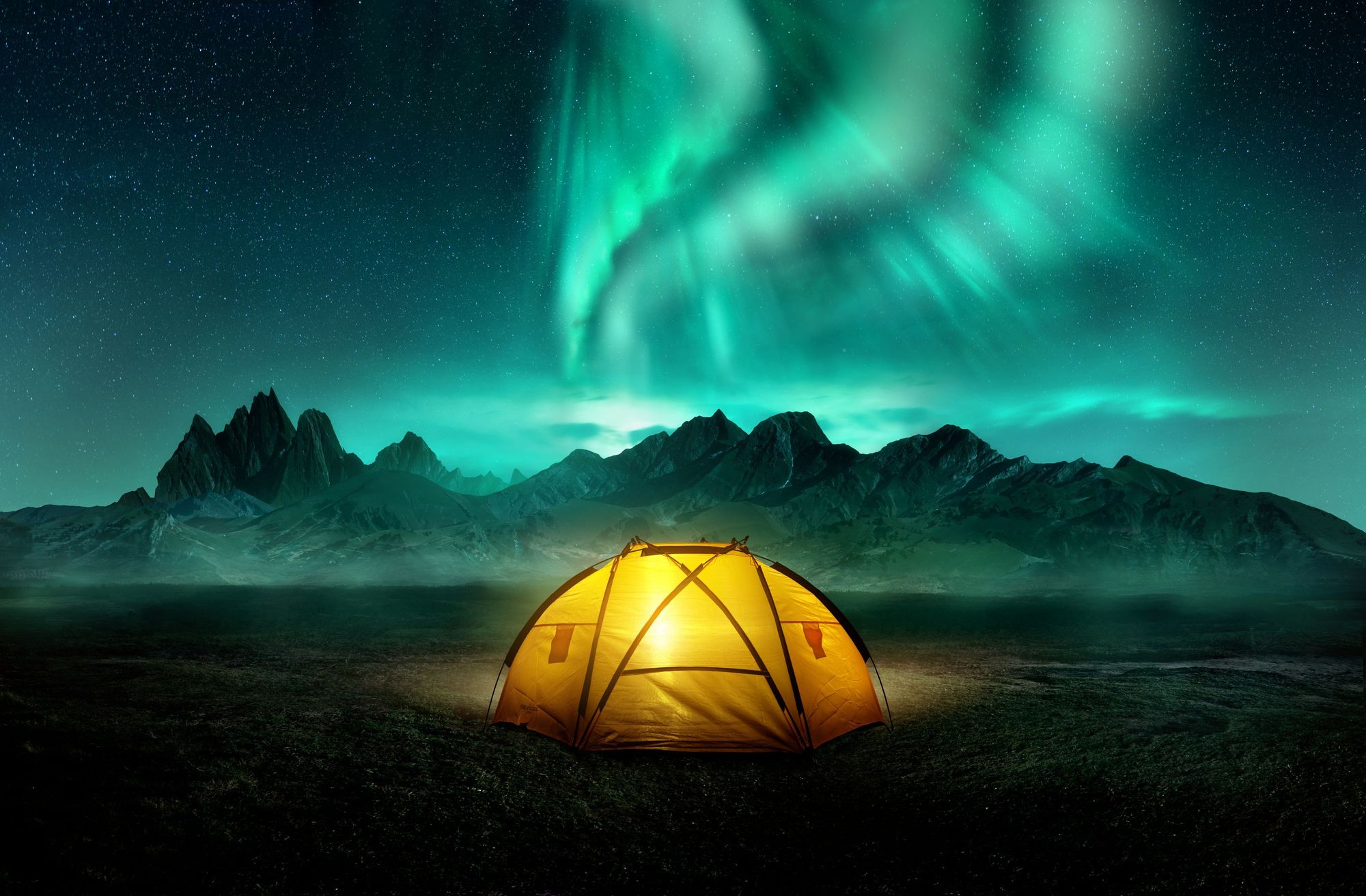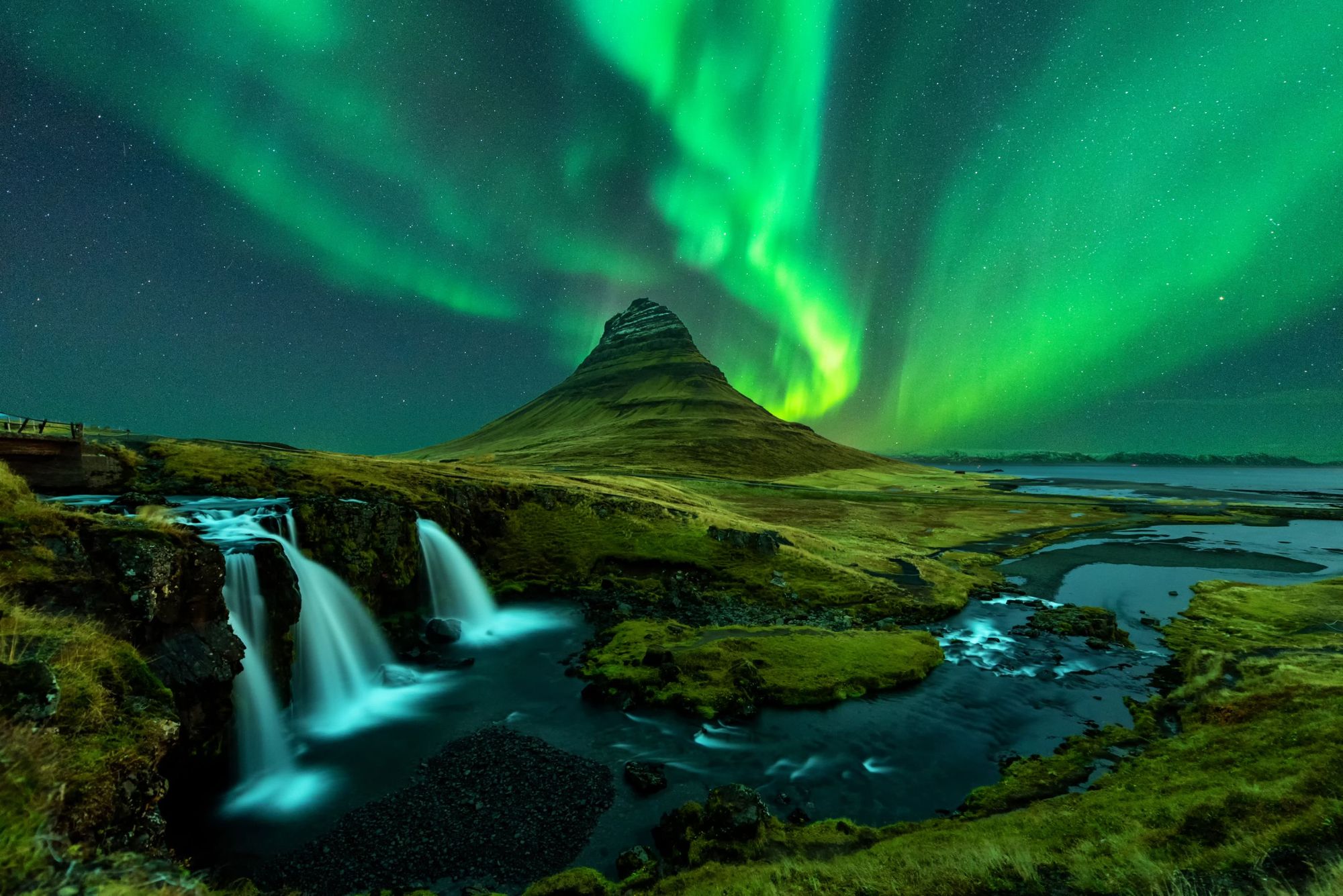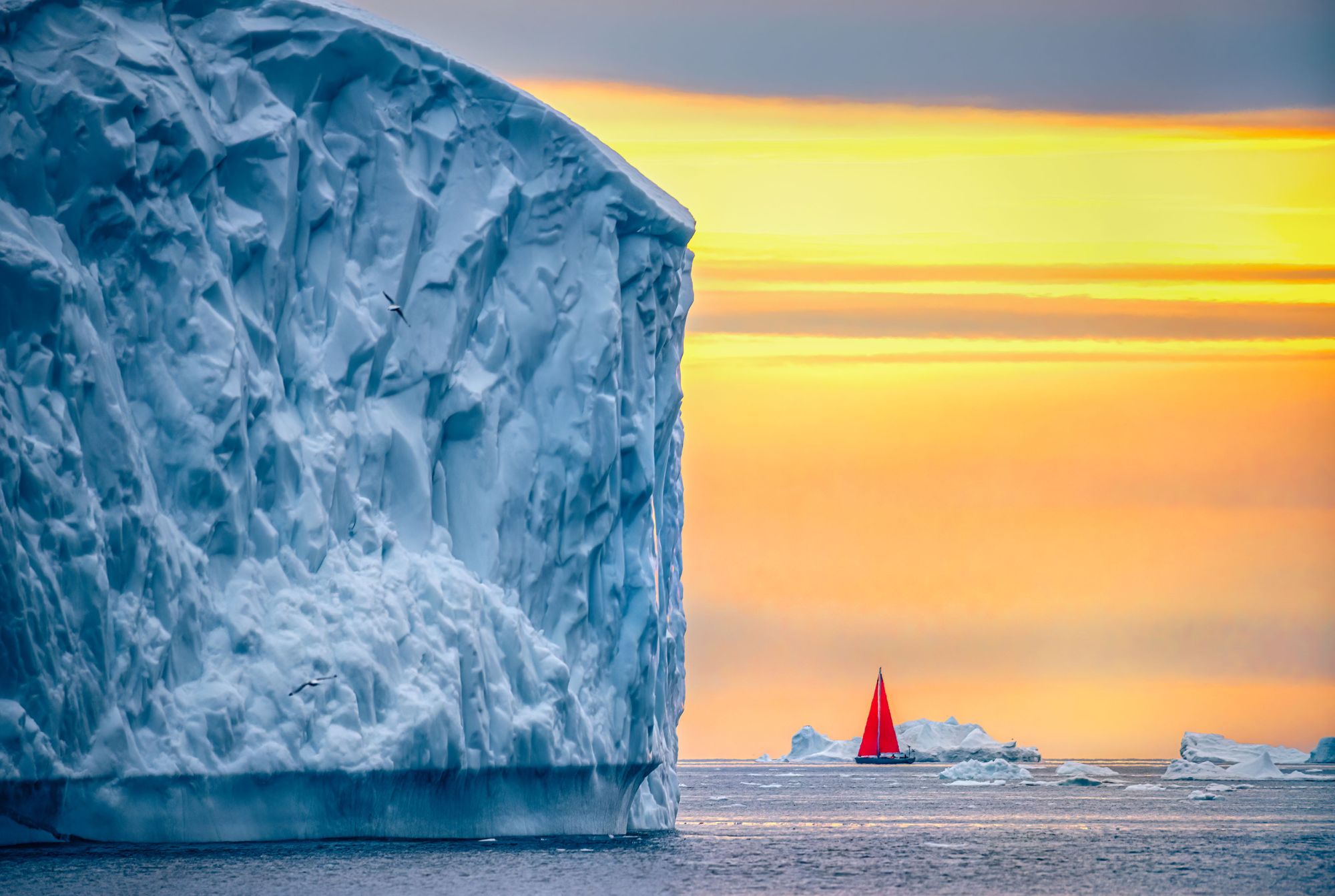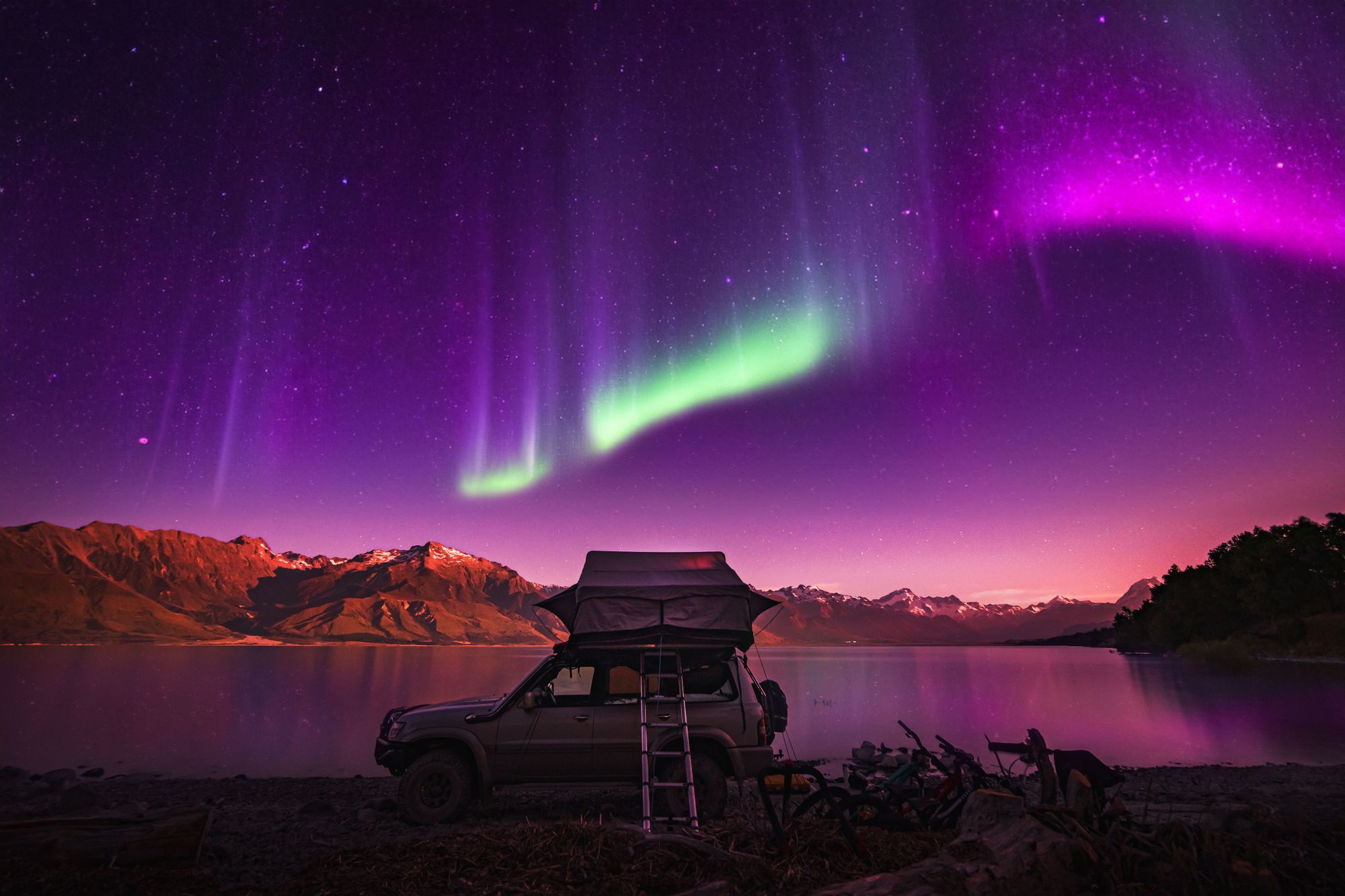
In Finnish, the northern lights are known as ‘revontulet’, meaning ‘fox fires’. The name comes from an ancient myth, which told of how the flickering green, yellow and red of the aurora were caused by a magical Arctic fox, who sprayed snow from the ground with their tail, and set the sky alight.
The northern lights occur year-round, but in order to be seen, they require a dark sky - so they usually can’t be seen in summer due to the midnight sun…
The Vikings believed the aurora borealis were caused by light bouncing off the armour of the Valkyries as they guided Odin’s warriors to Valhalla, or were the outline of the Bifrost Bridge itself, leading worthy warriors directly to the afterlife. In Iceland, the lights were thought to ease the pain of childbirth, while for the indigenous Sámi people of northern Scandinavia, the aurora were thought to be the souls of the departed, and it was taboo to talk about them.
In Norwegian folklore, the northern lights are said to be the spirits of maids dancing in the sky - and in the north of Scotland they're called 'merry dancers'.
This natural phenomenon truly is a sight to behold. But… what exactly is the aurora? Can you see the northern lights in summer, and when is the best time to see the aurora borealis? Here, we explore all of that and more.
What is the Aurora? What Causes the Northern Lights?

The aurora is a display of lights that can be seen in the sky, primarily near the poles of the northern and southern hemispheres. In the north, they’re called the aurora borealis (or northern lights), while in the south, they’re known as the aurora australis (or southern lights).
Amazingly, the lights are caused by activity on the surface of the sun. When a solar storm takes place on the surface of the sun, electrically-charged particles are emitted in huge clouds. These clouds can (and do) then travel millions of miles - and when they are drawn into the magnetic field of planet Earth, they speed on down to the poles, which is why those poles are our hotspots for viewing. These charged particles then crash into the atoms and molecules in our atmosphere, heating them up, and causing them to glow.
Voila; you have the northern lights.
The northern lights you see dancing in the air are electrically-charged particles from the sun colliding with our atmosphere...
Whether the lights appear as red or green to the human eye depends on whether it is oxygen or nitrogen being heated. Oxygen tends to be green, while nitrogen provides those mystical pinks in the sky.
Often, a scientific description can make a beautiful natural phenomenon sound quite dull. Here, that’s not quite the case. The northern lights you see dancing are quite literally particles from the sun colliding with our atmosphere - having travelled about 93 million miles (150 million kilometres) through space to do so.
The northern lights usually sit around 80-1000 miles above Earth.
Can you see the Northern Lights in Europe in Summer?

The northern lights occur year-round, but in order to be seen, they require a dark sky - so they can’t be seen in summer due to the midnight sun and long day-time hours. You won’t see the northern lights in Europe from late April to August.
Even if the solar activity is still strong, and they were flickering around up there, you simply wouldn’t see the lights. If you’re visiting an aurora zone in summer, enjoy all that daylight instead. There’s something particularly astounding about camping in such conditions, and seeing full daylight at 1am in the morning.
When is the Best Time to See the Northern Lights in Europe?

The best time of year to see the northern lights is from September to March, when the skies are dark. Beyond this, the days are typically too light.
Even during those months, the lights are notoriously difficult to predict - largely due to the unreliability of solar and wind activity and cloud cover. If clouds are blocking the lights then you won't be able to see them. This applies to all locations where you can see the northern lights, from northern Scotland and Scandinavia to Greenland, Iceland and beyond.

Given that the closer you go to the poles, the better chance you have of seeing the northern lights, the best areas for spotting the lights tend to get very cold.
That’s why September and March themselves are favourites of many for going on an aurora hunt. The colds tend to be less extreme during those months - as opposed to the bitter freeze of January. It's all personal preference, though, and the snowfall of winter can make the lights even more beautiful.
Solar cycles can also play a part. The lights are also most visible during the solar maximum state of our sun’s 11-year activity cycle. The last solar maximum was in 2014 and the next is predicted to begin in 2025. The years around the period of maximum activity are particularly good for spotting the northern lights - so yes, if you’re planning a trip, now is a good time indeed to be doing so.
Just remember, even in peak months, you can never guarantee a sighting of the northern lights, just as you can never guarantee you will see a certain animal. This is a natural phenomenon - not something you can control with a remote.
To find out more, read our guide: Where are the Northern Lights? When and Where to See the Aurora Borealis
Where to see the Northern Lights in Europe?

The best place to see aurora borealis is around the north pole itself. The further you get away from that, the less chance you have. This makes the likes of northern Norway, Finland, Sweden and Iceland all ideal for spotting the northern lights. The aurora borealis can sometimes be seen in Scotland, particularly on the Shetland or Orkney Islands, too - or in the northern part of the Highlands, but you do have less chance of seeing them there.
The good news is that wherever you pick, these lights tend to turn up in incredibly scenic locations -think snowy mountains and glimmering fjords.
The Best Northern Lights Tours in 2024 and Beyond in Europe

If you're travelling to somewhere in Europe in search of the northern lights, you have to remember it's an unpredictable phenomenon - so make sure you organise a few other activities while you're there. How does hiking across glimmering white plains sound, camping beneath the stars of Svalbard, or snowshoeing through a forest? All the while knowing that when it gets dark, as it does early in winter, you may just glimpse up and see the lights of the aurora...
Here are six of our adventures in Europe that give you a great chance of spotting the lights. We might be a little biased here, but we work with amazing local hosts and independent companies to make these into unique, exciting experiences. So, without further ado:
1. Husky Sled and Northern Lights Expedition in Norway

- Price: From £1,097
- Nights: 3
Mush your husky pack across Norway's remote Finnmark plateau - which spans 22,000 km2 of untouched wilderness - and sleep under the stars in a tipi. Warm up in an outdoor hot tub, eyes to the sky. This is one of the best places on earth to see the aurora borealis. Sleep in a Sami lavvo tent with soft beds, a wood-burning stove and large windows so you can look at the stars as you fall asleep.

2. Hike, Snowmobile and Wild Camp Through Svalbard in Winter

- Price: From £2,043
- Nights: 6
Spend two nights in the wilderness on an otherwordly winter camping experience in the Arctic. Here, you have a chance of seeing not just the northern lights, but also polar bears. Zip across Svalbard Island on a snowmobile adventure, glacier-bagging as you pass through the frozen Arctic Ocean. Deep-dive into an extensive network of glittering glacier ice caves where 'dark' takes on a whole new meaning.

3. Hike, Kayak and Chase the Aurora in Lofoten

- Price: From £1483
- Nights: 5
The highlight of this trip for aurora hunters is heading out on a midnight kayaking expedition, where you'll look for the northern lights from the quiet of the water. You'll also hunt for the northern lights on quiet beaches, or even see them on a unique winter wild camping experience. Add in some winter hiking and cosy sauna experiences, and you've got the perfect trip!

4. Sail, Hike and Chase the Northern Lights in Tromsø

- Price: From £1010
- Nights: 3
Experience a magical fjord adventure in the Arctic Circle, designed to maximise your chances of seeing the aurora in all its glory. Hike into the mountains, explore Tromsø and relax on the deck of a modern catamaran beneath a star-filled sky. Spot eagles and seals and fish for your lunch in the clearest, cleanest water imaginable.
5. Ice, Snow and Saunas in Finnish Lapland

- Price: From £882
- Nights: 3
Head beyond the Arctic Circle, into the ice-covered wilderness of the Pyhä-Luosto National Park. You'll learn how to use crampons and ice axes, and climb the Korouoma Canyon, the highest ice wall in Finland. You'll brave an icy 'polar plunge' in the lake and heat up in the sauna. Spend your evenings chasing and learning how to photograph the aurora borealis – away from light pollution, you'll be treated to spectacular displays.

6. Ultimate Arctic Circle Adventure in Norway

- Price: From £1483
- Nights: 3
Mush across the Arctic with Alaskan Huskies, snowshoe to a frozen lake, try your hand at ice fishing and relax in a Nordic sauna. Fat bike through snow-blanketed trails at night on an aurora-hunting adventure, weaving through hushed pine forests. Hop on a snowmobile for an epic journey to the edge of the Finnmark Plateau, one of Europe's last true wildernesses.

Related Content
- Where are the Northern Lights? When and Where to See the Aurora Borealis
- 5 Tips for seeing the Northern Lights in the Norwegian Fjords
- 10 of the Most Frequently Asked Questions About the Northern Lights
Inspired? Check our out full range of northern lights holidays now!


